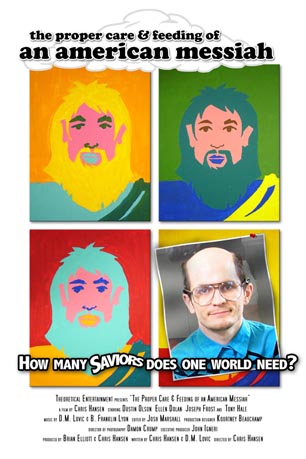Sweeney Todd (on stage)
 I know some of you are still sick of me talking about Sweeney Todd (the movie) -- but this post is about the touring stage show. So there!
I know some of you are still sick of me talking about Sweeney Todd (the movie) -- but this post is about the touring stage show. So there!A colleague had an extra ticket to last night's show at the Waco Hippodrome, and knowing what a fan I was of the movie, he invited me. I have never seen any stage version of the show, so it was an interesting experience. It's always hard to clear your mind of the film's images, especially because they're so closely associated with specific music cues that become overly familiar if you've listened the music a lot (as I have).
But the show is not staged in a conventional or natural way, so after a while, you kind of get past that. The actors portraying the characters in the story also serve as the orchestra, playing multiple instruments throughout the piece, and the action is carefully choreographed around a single set, with a black coffin occupying center stage and serving as various props (table, barber chair, etc.). Sweeney's murders are conveyed in an imagistic fashion -- though he does mime the act of drawing his blade across someone's throat, there are no effects involved. Instead, the lighting turns dark red (and a music cue signals the death to the audience). Meanwhile, an actor downstage pours blood from one white bucket to another (the sound of the blood collecting in the bucket is, I think, an attempt to recreate the sound effect of blood pouring from a sliced-open throat. And finally, the actor portraying whoever was killed dons a white coat that has been "pre-drenched" with blood.
This seems a little odd at first, I admit. But -- these actors must remain onstage because they still must play their instruments and participate in the choreographed movement of the scenery. So as the death toll in the play mounts, the increasing number of actors on the stage in bloody white coats creates an interesting image. By the end, nearly everyone wears such a coat, and this image -- of the differentiating between the dead and the living -- has an impact on the audience. Well, I should say that it had an impact on me.
You can watch a five minute clip of the 2005 Broadway version of this show here:



2 Comments:
I'm glad you've been enjoying so many plays. It's always interesting to note styles of storytelling that work on stage but not film, and vice versa.
Suppose the filmmakers of "Sweeny Todd" attempted to make their movie more stylized, like the stage verson. Do you think it would have worked? Would film audiences have responded as positively as stage audiences?
I am reminded of Lars von Trier's "Dogville" and "Manderlay." I personally thought they were very good--rather Brechtian, actually--but they were not at all popular.
Also, I saw the movie "Chicago" 5 or 6 years ago when it came out and it didn't really do much for me, but then I saw the play on Broadway a few months back, in a much more theatrical style--a bit like you described the play of "Sweeny Todd"--and I just loved it.
well, I think the movie was pretty stylized itself, albeit in a different way. I don't know if everyone in the audience here "got it" -- the film writer for the local paper suggested, in his blog, that audiences may have been expecting something more like the film.
In truth, the stylistic nature worked pretty decently, though I think in general audiences are primed more for naturalistic presentations of material (even on the stage), so something like Sweeney Todd is a bit of a stretch, but it's a worthwhile one.
Post a Comment
<< Home